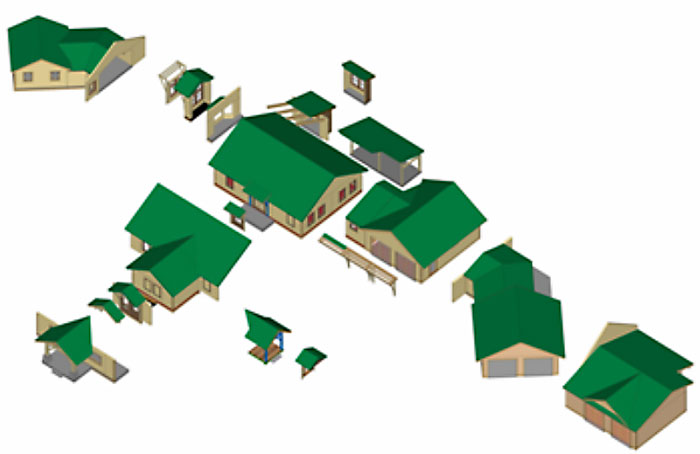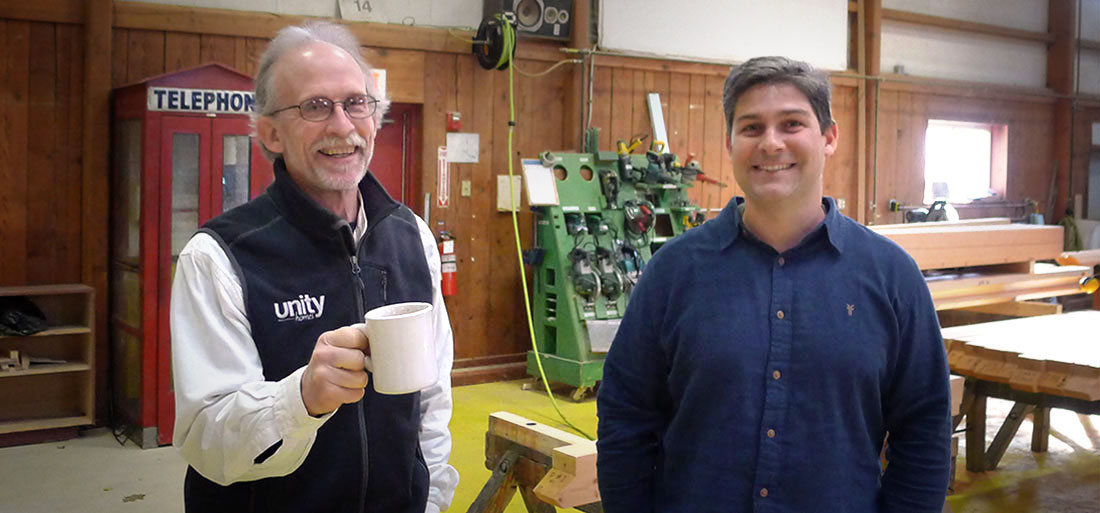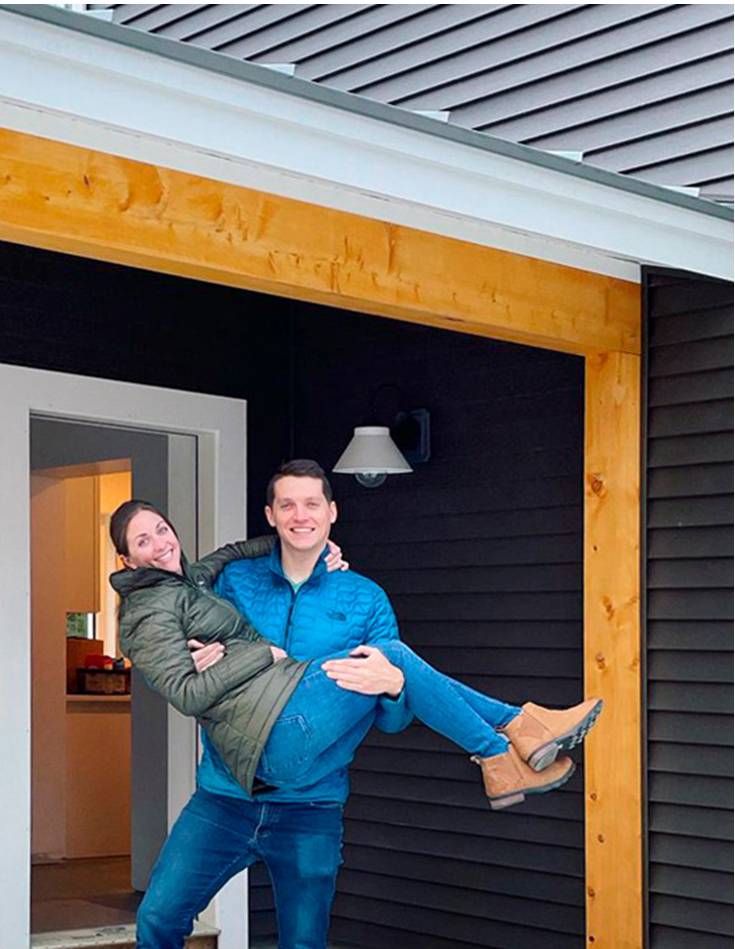Unity’s head architect Bill Holtz and lead designer Curtis Fanti.
Many visitors to Unity’s website head straight for the “Our Designs” section, which features example plans of several dozen Unity homes. What these visitors may not realize is the extent to which Bensonwood’s heritage of design expertise is embodied in these example plans, and in the design system that underlies them.
In the lead-up to Unity being spun off of Bensonwood in 2012, Bensonwood’s design team developed four design platforms based on the most popular plans for smaller homes that the company had built during its 40+ year history. Unity was launched with these four platforms, and the basic framework of a design system. Since then we’ve added a fifth platform—the small but mighty Nano. And through the experience of designing over 100 Unity homes, we’ve developed and refined the design system to optimize its flexibility and efficiency. Two key players in this effort have been Unity’s head architect Bill Holtz, and our lead designer Curtis Fanti.

Both Bill and Curtis came to Unity from Bensonwood, where their focus had been the design of high-end custom homes. Bill joined Bensonwood in 1990, and was the principal architect on many of the company’s most remarkable custom timber frame homes. Curtis has a similarly impressive background, having played a key role on Bensonwood’s design team for ten years before making the transition to Unity.
The move from Bensonwood to Unity required these design professionals to shift their thinking from one-off custom design to a systems approach. Using Unity’s design system to configure plans based on a standard kit of parts presents a different set of challenges from custom design.
As Bill puts it:
Rather than looking at Unity’s design system as limiting, I prefer to see it as providing opportunities for creativity and resourcefulness – a chance to implement a strategy of “refine and reuse” that encourages evolution and improvement. Shifting the focus toward making the component parts as well-designed as possible enables design efforts to have a positive impact across many designs, as opposed to just one.
Curtis adds: “Because we’ve developed really good design options for the kitchen and bathroom spaces typically found in our homes, we don’t need to redesign them on every project. This makes the process more efficient, and saves our clients time and money.”
Unity currently offers three design paths to accommodate clients with varying needs for customization. The Streamlined path is the fastest and least costly, because it’s based on designs that are already “cooked.” Our Personalized design path allows for some modifications to existing plans, and for configuring standard components in new ways.
Regardless of the path, you can be sure that your Unity home will embody decades of design expertise, and a predictably high level of performance.
Stay tuned to our blog for additional spotlight features on other members of the Unity team.







